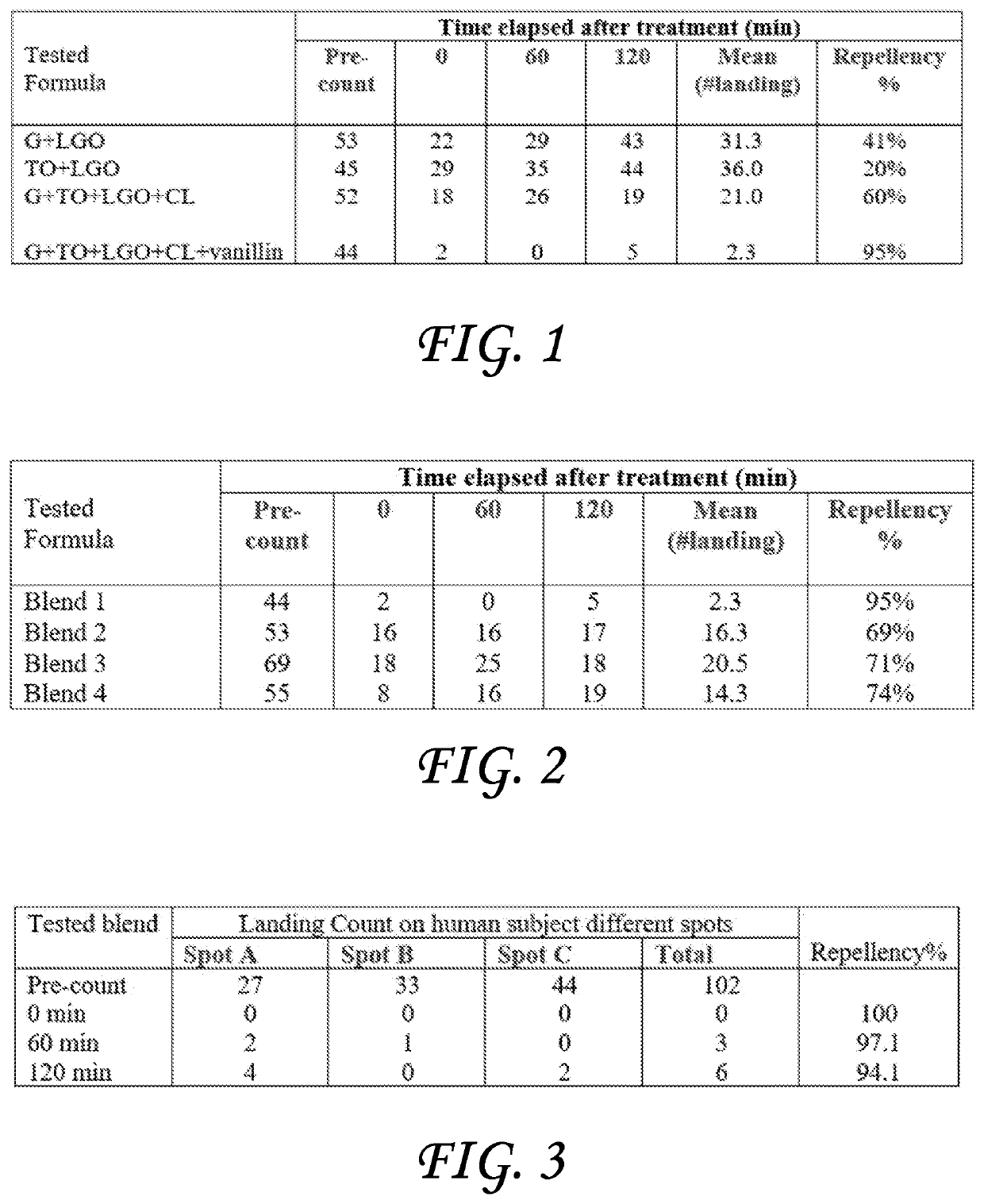Insect control formulations
a technology of insect repellent and composition, applied in the field of insect repellent, attractant knockdown and insecticidal composition, can solve the problems of long travel distance, affecting the widespread use of synthetic pesticide products, and affecting the safety of us
- Summary
- Abstract
- Description
- Claims
- Application Information
AI Technical Summary
Benefits of technology
Problems solved by technology
Method used
Image
Examples
example 1
[0042]This example describes the preparation of an insect repellent product according to an embodiment. The repellent was obtained by mixing the following components: 12% geraniol+5% thyme oil+10% lemon grass oil+3% clove oil+5% vanillin+15% corn oil and 50% IPA. At room temperature and under normal atmospheric pressure, the geraniol, clove oil, thyme oil were added to the reaction vessel and mixed together. Next lemon grass oil and corn oil were added and mixed thoroughly. Isopropyl alcohol was added and the composition was mixed thoroughly. The resulting composition from this mix was introduced to a manual trigger sprayer and applied topically. Landing rates were measured over time to determine the percent repellency.
[0043]The complete results are listed in Table 1. Among the several compositions tested, only one of them provided more than 80% protection against mosquito landing and bites up to two hours. The ingredients of this composition are: 12% geraniol, 5% thyme oil, 10% lem...
example 2
[0046]This example describes the preparation of embodiments of an expected repellent and insecticide for flying insects. In some embodiments the insect repellent and killer can be comprised by mixing: geraniol (about 1-20%)+about 1-45% methyl salicylate (winter green oil)+about 1-65% thyme oil+about 1-15% vanillin+about 1-25% lemon grass oil+about 5-60% sunflower oil+about 10-70% IPA.
[0047]In certain embodiments, the target insects include flying and crawling insects. Flying insects include but not limited to mosquito, housefly, horse fly, barn fly, biting flies. Crawling insects include but not limited to cockroaches, ants, and spiders.
example 3
[0048]This example describes the preparation of embodiments of an expected repellent and insecticide for flying insects, that includes but not limited to mosquito, horse and barn flies and other biting flies of the present embodiments. The repellent and insecticide is obtained by mixing the following components: about 5-20% geraniol, about 1-40% methyl salicylate (wintergreen oil), about 0.1-10% vanillin, about 1-55% thyme oil, about 1-25% lemon grass oil.
PUM
 Login to View More
Login to View More Abstract
Description
Claims
Application Information
 Login to View More
Login to View More - R&D
- Intellectual Property
- Life Sciences
- Materials
- Tech Scout
- Unparalleled Data Quality
- Higher Quality Content
- 60% Fewer Hallucinations
Browse by: Latest US Patents, China's latest patents, Technical Efficacy Thesaurus, Application Domain, Technology Topic, Popular Technical Reports.
© 2025 PatSnap. All rights reserved.Legal|Privacy policy|Modern Slavery Act Transparency Statement|Sitemap|About US| Contact US: help@patsnap.com


